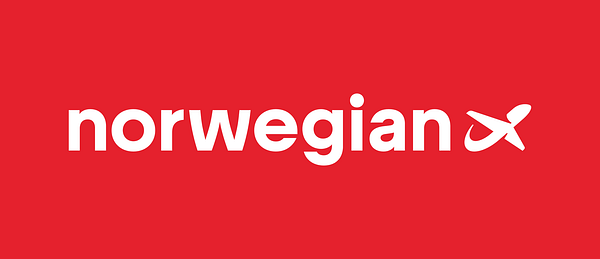
Press release -
Norwegian group had 2.6 million passengers in June and provides updated profit outlook for 2024
In June, Norwegian had 2,245,735 passengers while Widerøe had 346,747 passengers, totalling 2,592,482 for the group. This represents an 11 percent increase in passengers since last June for Norwegian and a 6 percent increase for Widerøe. The group revises its profit outlook for 2024 downwards and provides an updated unit cost forecast.
“I am pleased about the double-digit percentage increase in passengers travelling with Norwegian compared to June last year, as well as the positive passenger figures for Widerøe. Primarily due to a significant capacity increase on longer flights, Norwegian experienced a slight decrease in yield and load factor. We are excited to continue serving a growing number of customers as they embark on their summer holidays,” said Geir Karlsen, CEO of Norwegian.
The capacity (ASK) was 3,706 million seat kilometres, up 18 percent from the same period last year. Actual passenger traffic (RPK) was 3,126 million seat kilometres, an increase of 16 percent from June 2023. Load factor has improved compared to April and May, while being down 1 percentage point from June 2023. In June, Norwegian operated with a regularity, meaning share of scheduled flights taking place, of 99.4 percent. The punctuality, meaning share of flights departing within 15 minutes of scheduled time, was 75.0 percent, down 1.4 percentage points from June last year. However, 96 percent of all flights arrived within 60 minutes of scheduled arrival time. The airline operated an average of 86 aircraft.
Expansion in the North
The last month also saw several route launches from Norwegian. The airline has launched a total of 50 new routes so far this year. In particular, the Northern Norway destinations have increased in popularity. Norwegian has established ten new routes between Northern Norway and European cities.
“We are enthusiastic about the growing interest in Northern destinations from Europe. The extensive networks of Norwegian and Widerøe in Norway, along with our new routes in Sweden and Finland, allow us to connect European travellers with the best that the North has to offer,” said Geir Karlsen.
For Widerøe the capacity (ASK) in June was 185 million seat kilometres. The actual passenger traffic (RPK) was 142 million seat kilometres, while the load factor was 76.8 percent, up 5 percentage points from June last year.
Revised profit outlook for 2024
During its results announcement for the first quarter of 2024 on 24 April, the Norwegian group provided a results outlook forecasting an operating profit (EBIT) of NOK 2.5 to 3.2 billion for the full-year of 2024. The profit outlook excluded any profits from Widerøe, the regional carrier which Norwegian acquired in January of 2024. Unit costs excluding fuel for Norwegian was forecasted to be flat compared to 2023. The USD/NOK exchange rate was assumed to be 10.5.
The group is now forecasting a group operating profit (EBIT) for 2024 of NOK 2.1 billion to NOK 2.6 billion, including Widerøe. The adjustment in the results outlook is predominantly a result of four factors. Firstly, softer traffic demand during the second quarter, with a contraction in both load factor and yield compared to last year. Secondly, a higher than projected wage settlement for pilots following the conclusion of new collective-bargaining agreements this quarter. Thirdly, aircraft delivery delays from Boeing, which has forced the company to source external capacity corresponding to between one and two aircraft during the summer season. And finally, the NOK exchange rate has been weaker as compared to the US dollar. The company is also forecasting unit cost excluding fuel for Norwegian to increase by a low single-digit percentage compared to 2023. The forecasts are based on current foreign exchange and jet fuel forward prices for the remainder of the year.
Separate press release on Widerøe’s traffic figures is found at the Widerøe media centre. In Norwegian only.
Topics
Categories
About Norwegian
The Norwegian group is a leading Nordic aviation company, headquartered at Fornebu outside Oslo, Norway. The company has over 8,200 employees and owns two of the prominent airlines in the Nordics: Norwegian Air Shuttle and Widerøe’s Flyveselskap. Widerøe was acquired by Norwegian in 2024, aiming to facilitate seamless air travel across the two airline’s networks.
Widerøe’s Flyveselskap, Norway’s oldest airline, is Scandinavia’s largest regional carrier. The airline has more than 3,500 employees. Mainly operating the short-runway airports in rural Norway, Widerøe operates several state contract routes (PSO routes) in addition to its own commercial network. In 2023, the airline had 3.3 million passengers and a fleet of 48 aircraft, including 45 Bombardier Dash 8’s and three Embraer E190-E2's. Widerøe Ground Handling provides ground handling services at 41 Norwegian airports.
The Norwegian group has sustainability as a key priority and has committed to significantly reducing carbon emissions from its operations. Among numerous initiatives, the most noteworthy is the investment in production and use of fossil-free aviation fuel (SAF). Norwegian strives to become the sustainable choice for its passengers, actively contributing to the transformation of the aviation industry.


